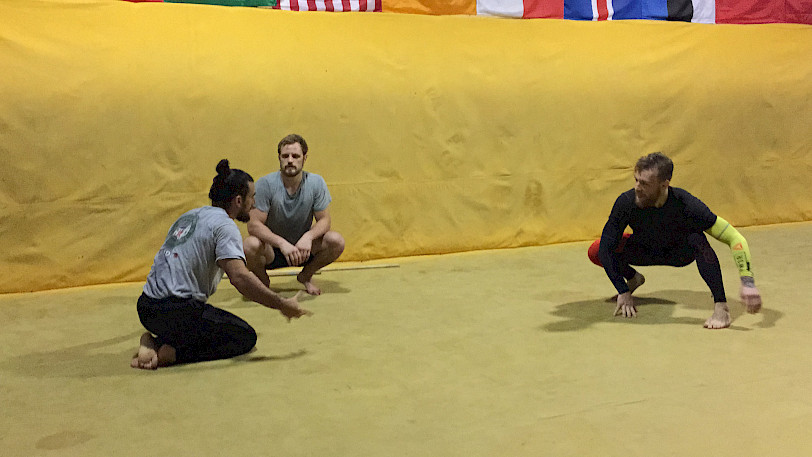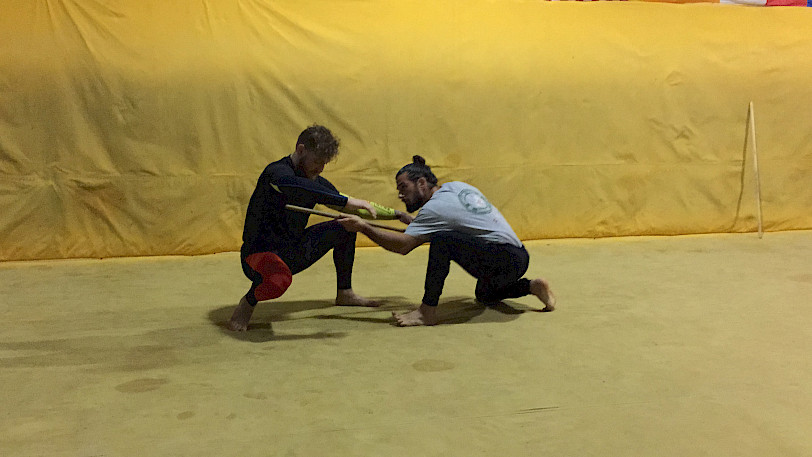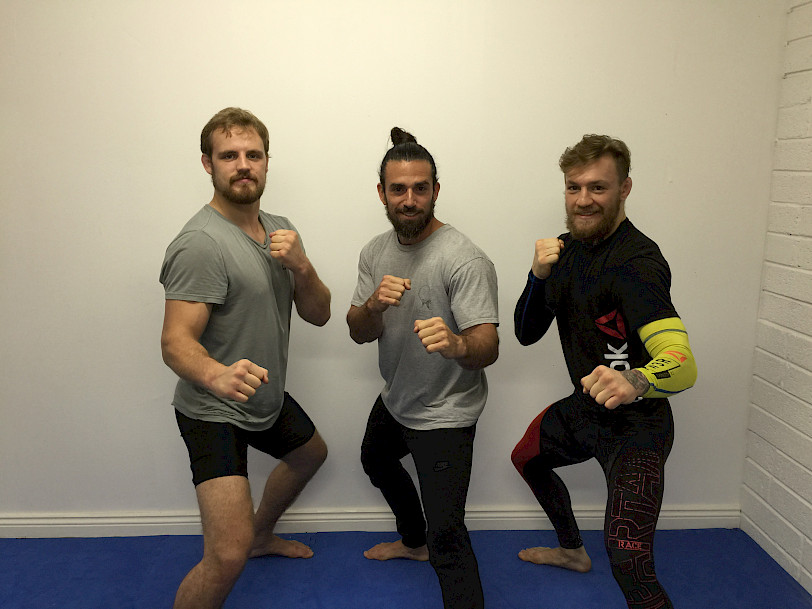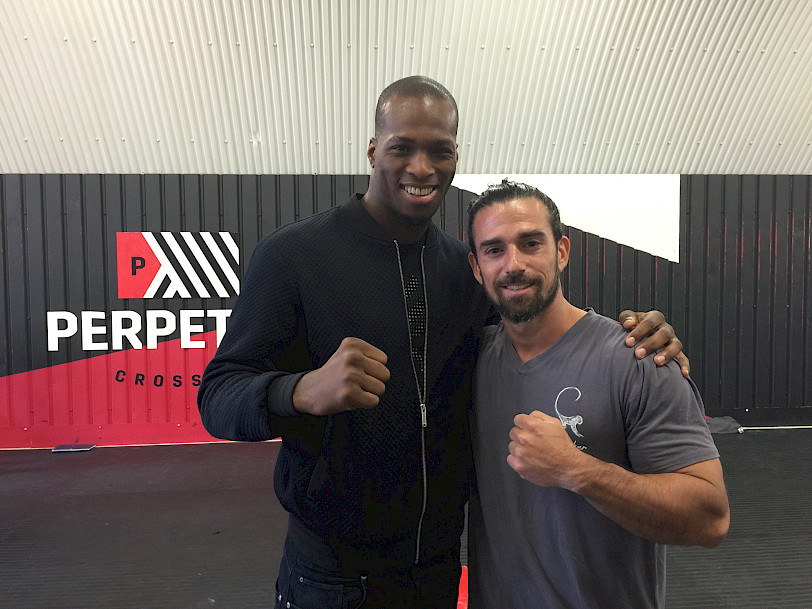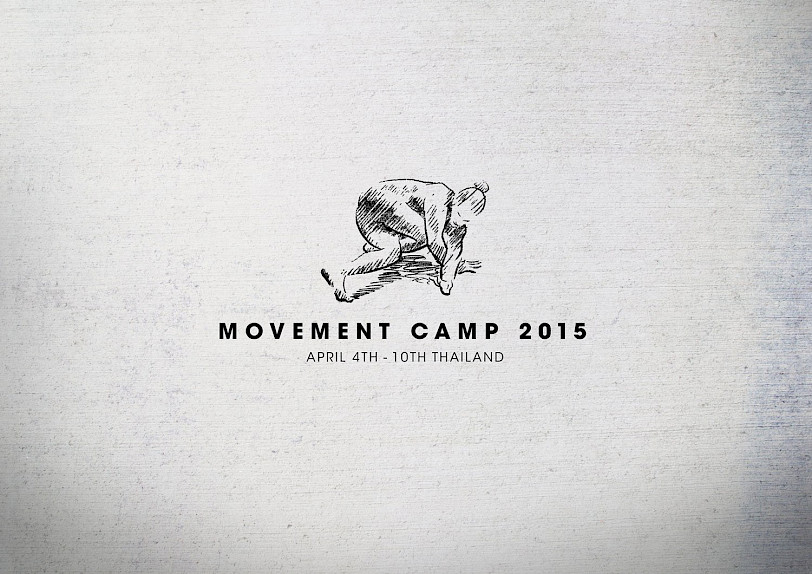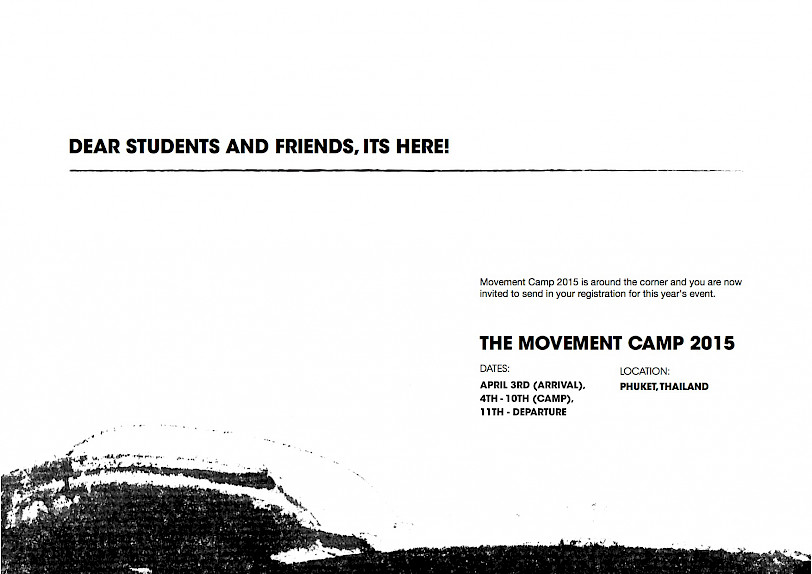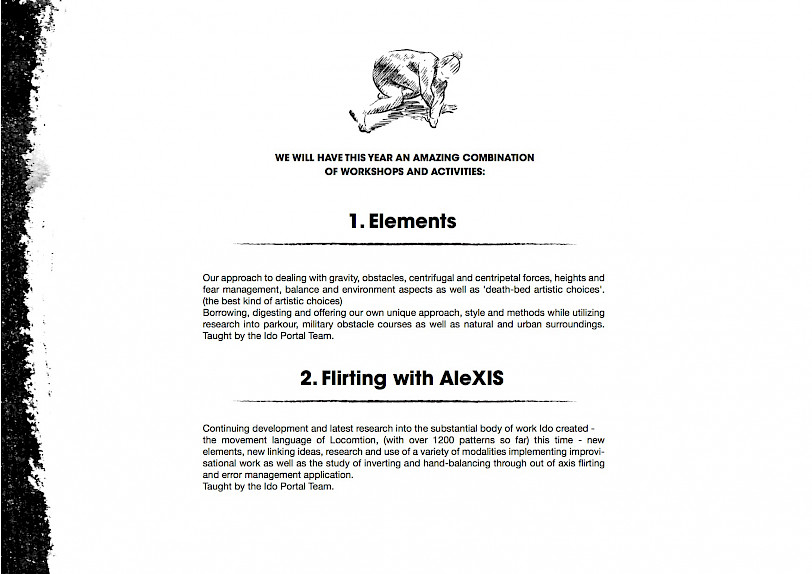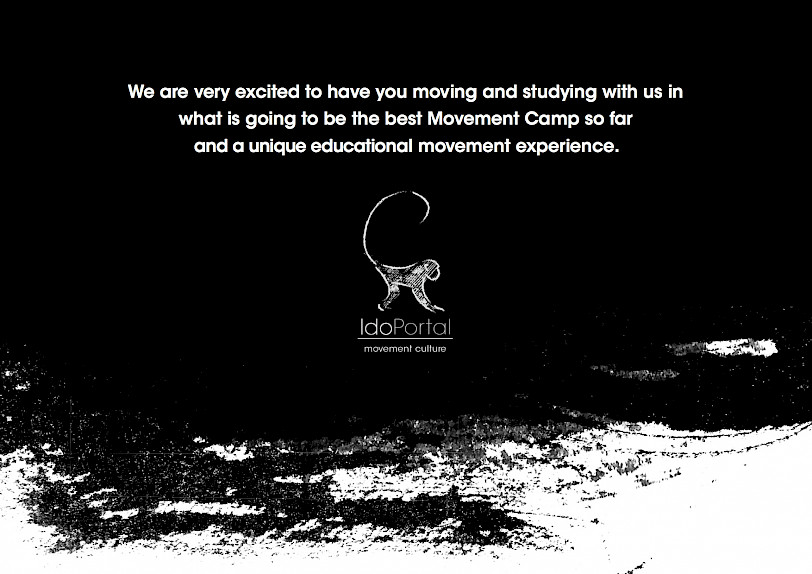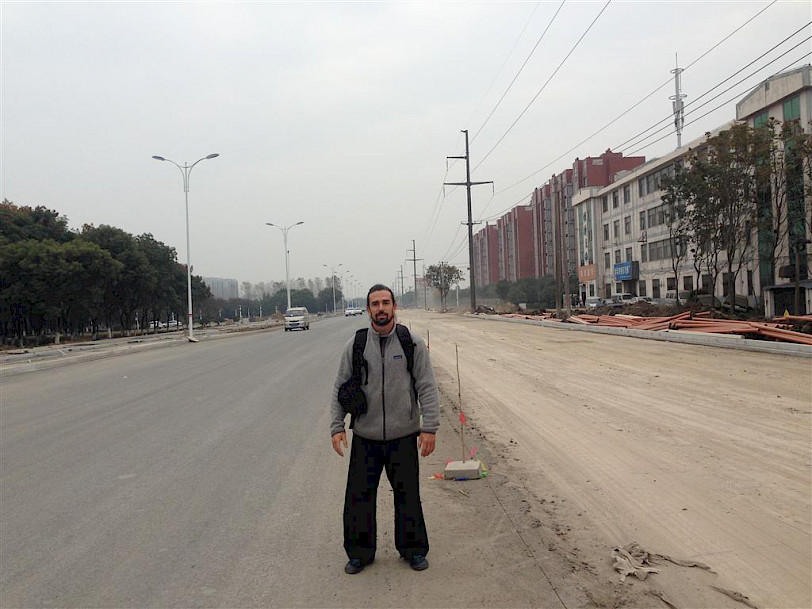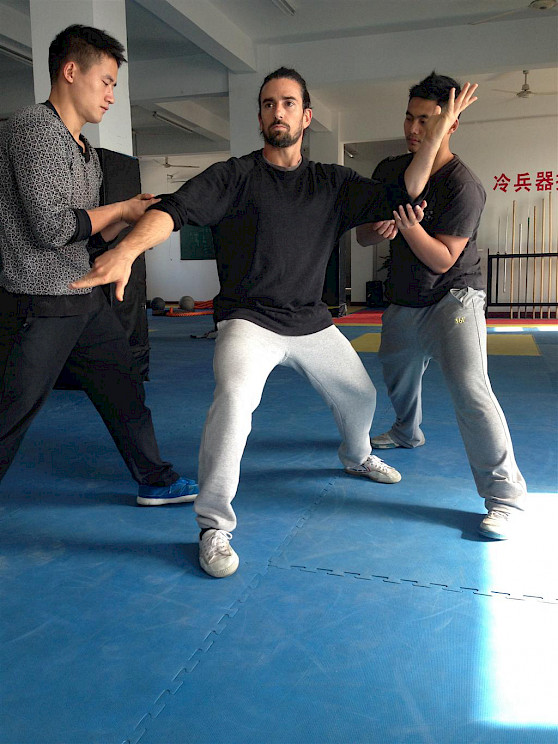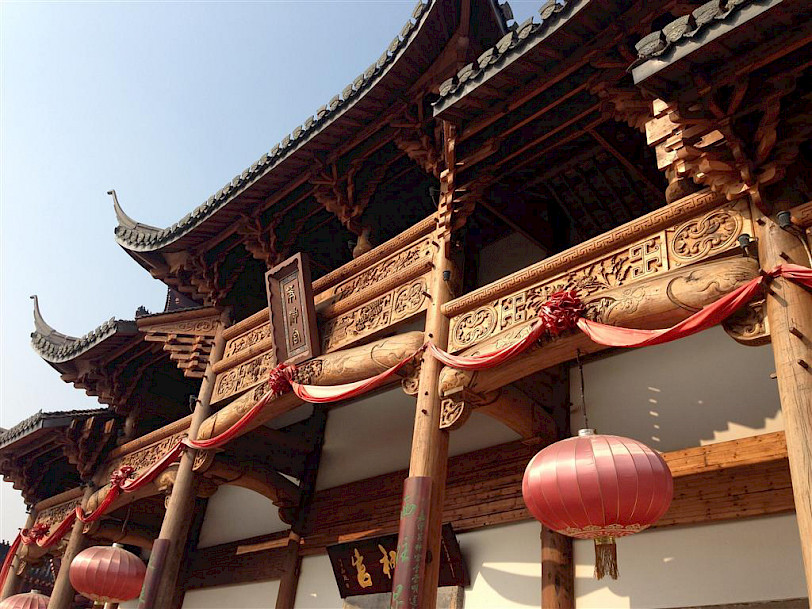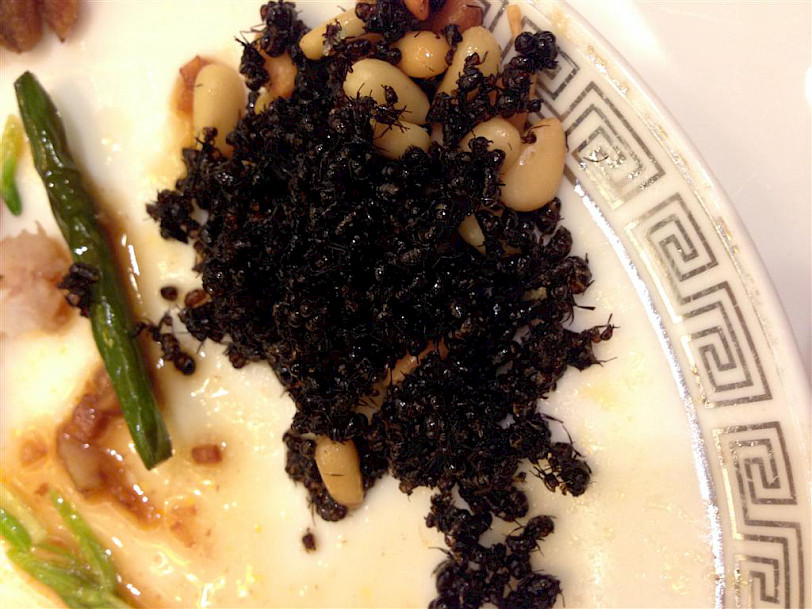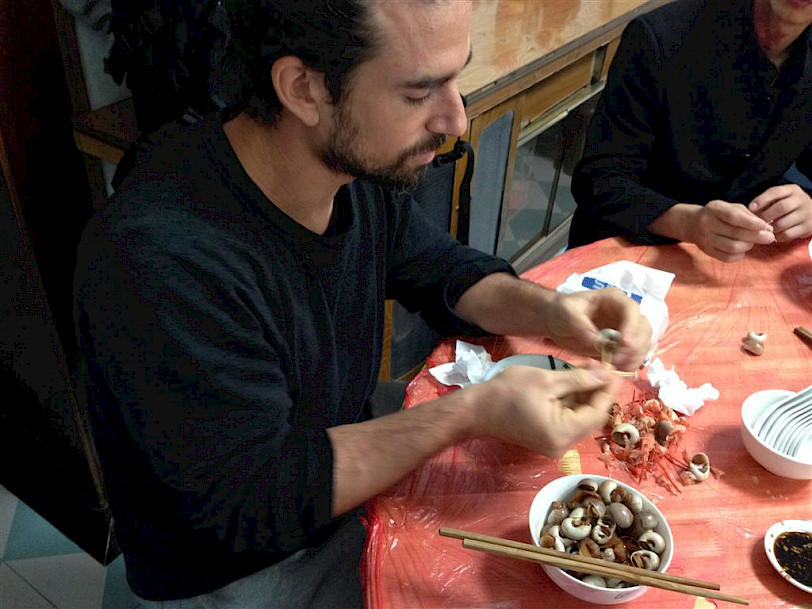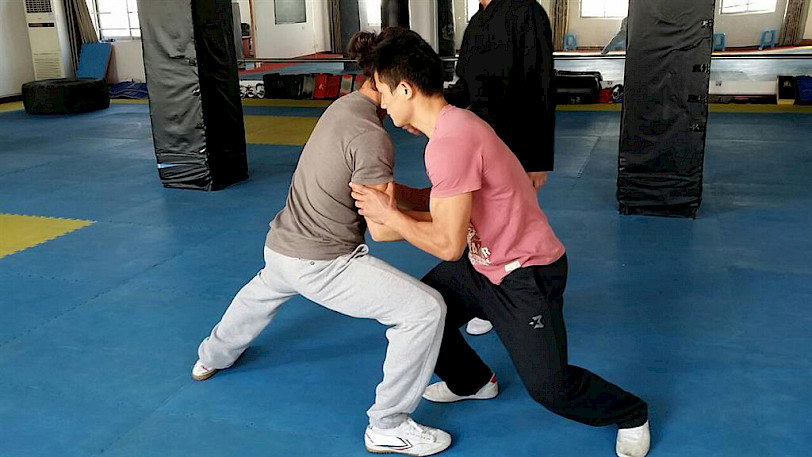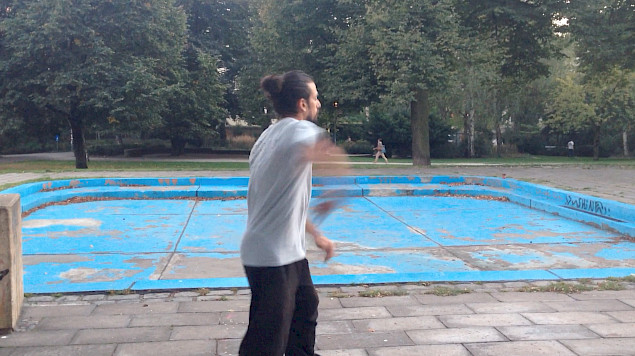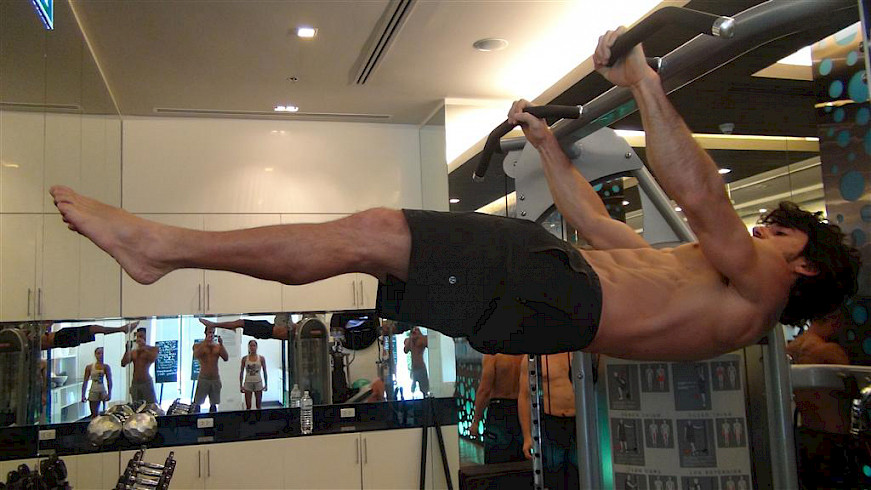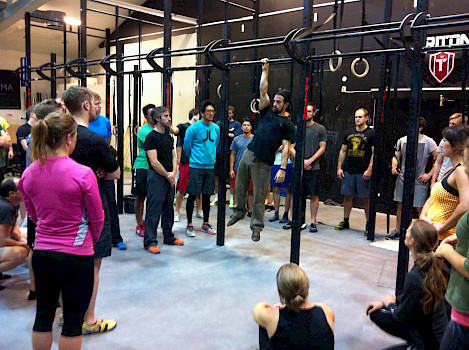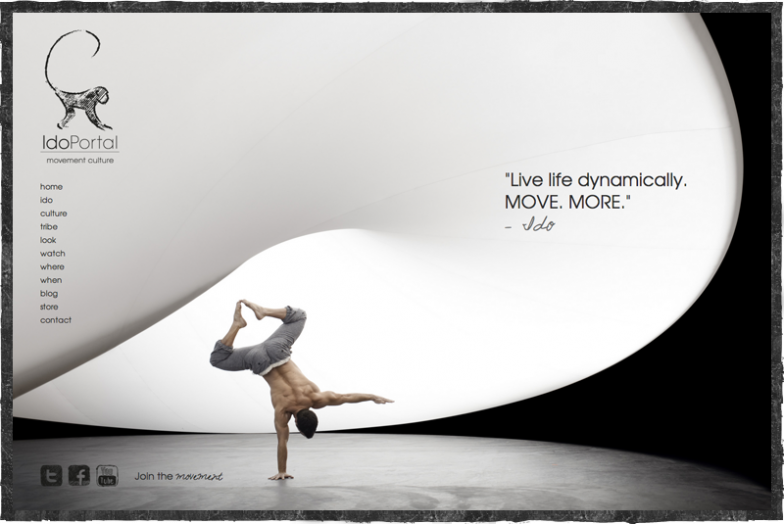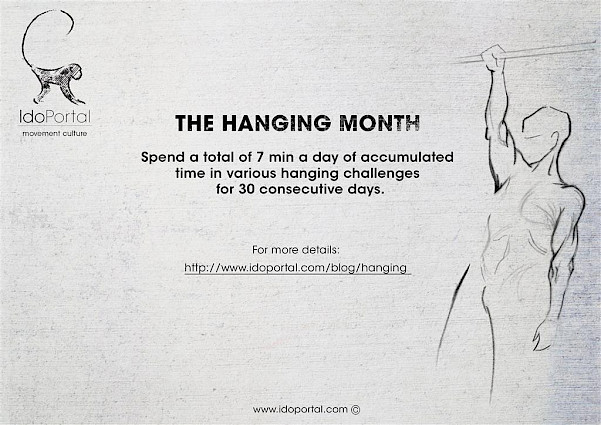
I've been silent for a while now on the blogosphere. In recent years I've made the choice of devoting my time to my movement research and practice, teaching my students and developing my company. It has left me little time for anything else but that is finally changing as I receive more and more help from the tribe.
Lets talk today about Hanging Work.
I've been using hanging in my own training and that of my students for over a decade now. It is a center piece in the basic movement approach we are implementing with beginners as well as relevant in the training of more advanced movers.
Hanging is almost non-existent in the fitness realm. You can see hanging work done in Gymnastics, Rock Climbing and Parkour but little elsewhere. It is no coincidence that those disciplines showcase some of the best pullers in all sports since hanging provides an important building block for pulling.
What is hanging, actually? We define hanging as a form of suspension that includes straight arms. (that has exceptions of course)
Hanging can be divided into:
1. Passive Hanging - relaxed, deactivated, targets more of the passive structural integrity components than the more 'muscular heavy' hangs. It is where more often than not we will start with a beginner. (certain issues with shoulder health and integrity might require we start with active hangs for example)
2. Active Hanging - selective activation of the pattern, engaging musculature and minimizing the demands on passive structural integrity while maximizing the active-component demand and adaptation. Active hangs are a type of strength work. More specifically - Straight Arm Scapular Strength.
3. Dynamic Hanging - the use of a combination of passive/active hangs AND momentum to initiate a variety of dynamic actions such as Brachiation, Swinging, dynamic release and catch (Lache for example) and more.
Often times one type of hanging is regarded as superior to another, this represents a limited and partially biased point of view. Movement is a big universe and it requires a variety of tools. Different structures, needs and demands makes the situation even more complex - that is why, as my close students know, I see the need of contextual approach vs general prescriptions.
The various types of hangs are actually very different and complementary in the type of adaptations they induce. One should engage in all three main types of hangs in order to develop optimally, context allowing.
Benefits of Hanging work:
1. Shoulder/elbow/wrist health and the recovery of the lost 'overhead reach' range - promoting optimal range and making use of the upper body as it was designed to be used. By simply allowing gravity to 'do its thing' in the passive work or "fighting it" in the active work - one can send a very intense adaptation producing signal into one's structure. I wonder if we implement hanging work throughout our lives, from young age and into old age and without taking too large of a break what would be the results over the now lost 'overhead reach' range and shoulder injury rates.I suspect we would have little need to 'stretch our shoulders' any further. Of course shoulder integrity, elbow and wrist/hand/finger health can benefit tremendously from daily hanging as well. (See added section below on the subject)
2. Lead up to pulling work, climbing and more advanced patterns. Hanging sits at the base of those patterns, just like standing does for walking. A deficiency in hanging work will become evident at a certain stage - some get stuck early unable to develop even a single chin up. (very common female problem)
3. Active hang work is especially important tool in certain advanced phases and scenarios - as a plateau breaker for advanced pullers approaching the One Arm Chin Up for example.
4. Grip Strength and Grip Endurance. If you cant grip it - you cant manipulate it/yourself. We have grown weaker all over due to the lack in physical demands in our daily lives. Grip is no different.
5. Creating 'Terminology' for future complexity. Hanging work creates awareness and a language of positions that can be later used to put together sophisticated pieces of movement in a variety of scenarios from gymnastics to parkour to tree climbing to rock climbing and more. It is a tool for improvisation and play.
So, as you can see, hanging should be brought back to fashion. Its time to educate people on the need to hang more and to implement it into our daily lives.
As always, I am not a fan of the pure fitness approach of 'training it'. I prefer the 'move it' approach any day of the week.
What does it mean?
Instead of engaging in hanging work as a 'strength session', a 'WOD' or whatnot, I would rather see hanging appear in our daily lives - spread out and practiced shortly but often. If it is done in that manner, the stimulus will be more potent but more than that it is about a philosophical paradigm shift - "I am not training" but "I am moving - all the time".
In order to do so efficiently I recommend setting up anchor points that will be accessible to you. From buying a cheap and easy to install doorway pull up bar (have a look at a sport's shop next to you or online) to putting anchors in your ceiling for a pair of gymnastics rings, etc. Many of my students working in offices have done the same in their office. You read it right.
The basic logic is: if you have anchor points - you might hang from them. If not - of course you left yourself no option. I find people who have installed anchor points and made them readily available for themselves, their children, loved ones or office fellow workers tend to DO THE HANGING much more than those who need to 'go to the gym' to do so. First things first - install some anchor points. Do it now.
The Hanging Challenge
In order to help you and promote hanging we have decided to initiate another challenge. Our last '30/30 Squat Challenge' went viral and with over 13,000 active members and hundred of thousands of views has put more people back in the squat than anything else before.
The Hanging Challenge is simple - spend 7 min of accumulative time (not in one go but spread throughout the day) performing various types of hangs - passive/active/dynamic for a period of consecutive 30 days.
Every week we will add more material for beginners, intermediate level and advanced hanging to add to your arsenal. Each one of those drills will be used to continue to knock off seconds of your daily task.
In order to participate, post results, pictures, videos, comments and questions please join the new 'Movement Culture' Facebook group we have created for this challenge and others in the future, make sure to share it with your friends as well: Movement Culture FB Group
Second, make sure to "Join the Movement" at the main page www.idoportal.com to receive updates from us on future blog and video posts.
Third, make sure to subscribe to our YouTube channel to receive updates about new clips here: Ido Portal YouTube Channel
Last, 'like' us on our professional FB page if you hadn't already, it will be used as another tool to communicate with you: Ido Portal Official FB Page
How to start?
Without further adieu, lets get started.
Here are a few patterns to play with, while accumulating your daily 7 min total hanging time:
* Passive Hang
* Active Hang / Scap Pull Ins
* Side to Side Stationary Swing
Approach and Scenerios
Shoulder Pain - No Dislocations
I suggest you implement partial weight passive hangs (feet supporting some weight) and/or full hangs in the pronated and neutral grips for the total 7 min a day in the first week or two at least.
The reason to eliminate swings and active hangs is to provide maximum adaptation to reshape the shoulder and effect the soft tissues. Avoid pain but aim to strain the tissues - no strain, no adaptation. Proceed with caution - better underdo than overdo.
* Note: Shoulder injuries might require more tools than just hanging such as scapular stabilization work. For a complete approach contact us at info@idoportal.com for a consult or Online Coaching.
Shoulder Pain - Dislocations / Partial Dislocations
I suggest you start with partial weight and/or full active hangs.
The reason to eliminate passive hangs and dynamic swinging is to allow the shoulder to regroup, tighten up and educate the musculature, capsule and ligaments to hold and stabilize better.
This should be done for the full month and beyond - passive hanging can be examined after that - gradually and carefully to see if one can proceed into more relaxed and dynamic hangs. Always perform without ANY pain.
* Note: Shoulder injuries might require more tools than just hanging such as scapular stabilization work. For a complete approach contact us at info@idoportal.com for a consult or Online Coaching.
Healthy Strong Shoulders but Inflexible
I would concentrate on passive hangs for the full duration of 7 min a day X 30 consecutive days. As you progress beyond week 1 - we will post more advanced passive hangs that might be useful as well for you.
* Note: Increasing shoulder mobility safely in adults is a complex issue that might require more than just hanging.
Healthy Flexible Shoulders but Weak (cannot pull/chin up or can only perform few reps)
I would recommend 1 total minutes a day of passive hang - usually implemented as a mini-warm up and then the rest of the daily hanging time spent on active hangs and a few dynamic hangs thrown as cool down.
This approach will enable to maintain mobility, increase strength and shoulder blade stability and prepare for more advanced stuff.
* Note: Getting stronger in pulling/pushing will require more than just hanging. A complete approach should include hanging work, though.
Hanging and curing your shoulder injuries
A few weeks after finishing this post I received a message from one of my students - Justin G notifying me about an interesting book that has been released by an Orthopedic Surgeon using hanging to cure his patients from shoulder injuries.
I immediately ordered the book on Kindle and read it.
Indeed the book shows in great detail the shoulder anatomy and the effects of hanging on it as documented by Dr. Kirsch with a few decades of experience.
Dr. Kirsch describes a very basic but successful approach for most shoulder injuries and goes to offer daily hanging for most shoulder issues. He believes many can avoid surgery, increase range of motion and cure themselves from shoulder disability.
I found the book refreshing on the description of the actual adaptation that occurs - the reshaping of the Coraco-Acromial-Ligament and the change in Acromion shape and position.
The old thinking that you are born with a certain type of Acromion and then doomed for life might be outdated. We might have had a tool for reshaping our shoulder's anatomy lying in front of our nose for the last 2 million years.
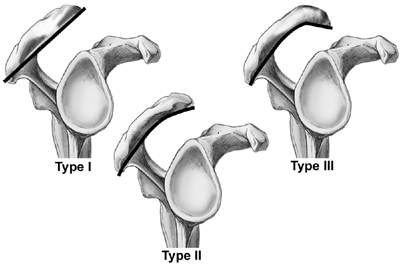
I believe the book is a great read for those interested in the anatomy and physiology behind the process.
As for the movement part of the book - there Dr. Kirsch is obviously not an expert and presents somewhat of an outdated and poorly described approach. The dumbbell exercises added to the hanging work are especially non-optimal and a better shoulder blade stabilization work can be prescribed. Also, the hanging is simply left for you to figure out - there is no description beyond the recommended Pronated Grip.
Another point to mention is that Dr. Kirsch goes on (in a very non-North American and refreshing way) to push his clients with frozen shoulders, torn Rotator Cuffs and other conditions to go beyond a certain pain barrier that is required while reshaping the Ligaments but goes to warn those with unstable/dislocated shoulders to avoid hanging completely.
I agree about the need to strain the tissues, but believe avoiding pain is important as much as possible. Inflaming the CAL is not smart in my eyes and will limit progress. Further - I do believe unstable shoulders can benefit from hanging just that the type of hanging should be strictly ACTIVE in the beginning.
You can find Dr. Kirsch's book here
Last words of advice
- No pain. Just a strain.
- If you can use your thumb - do it. Thats why you have a thumb.
- Vary your anchors - rings, bar, tree branch, rope, towel, climbing grips, etc - all are good and all - different.
- Do less but more often. We are meant to receive such frequent movement signals.
- Be consistent with the work. No rest days in the first 30 days. Don't break the habit - form it!
Enjoy your hanging, share this post with your friends, loved ones, with anyone who has shoulders!
More to come in the upcoming weeks - follow the blog, the FB page and group as well as our email updates that should start soon,
Hang in there,
Ido.

